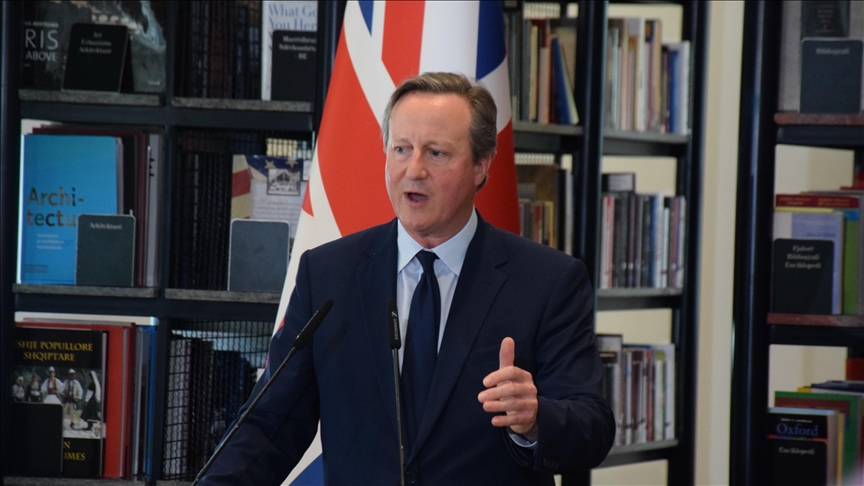Irish premier’s full speech on recognising the state of Palestine
Gráinne Ní Aodha, PA
Wed, 22 May 2024
Irish premier Simon Harris announced on Wednesday that Ireland is recognising the state of Palestine in a joint move with Norway and Spain.
The move will take effect formally on May 28.
Here is the Taoiseach’s speech given at Government Buildings in Dublin.
Mr Harris said: “Last month, I stood on these same steps with Prime Minister Sanchez of Spain when we agreed that the point of recognising the State of Palestine was coming closer. That point has now arrived.
“Today, Ireland, Norway and Spain are announcing that we are recognising the State of Palestine. Each of us will now undertake whatever national steps are necessary to give effect to that decision.
“In the lead up to today’s announcement, I have spoken to a number of other leaders, and I am confident that further countries will join us in taking this important step in the coming weeks. This is an historic and an important day for Ireland and for Palestine.
“On the 21st of January 1919, Ireland asked the world to recognise our right to be an independent state.
“Our ‘Message to the Free Nations of the World’ was a plea for international recognition of our independence, emphasising our distinct national identity, our historical struggle, and our right to self-determination and justice.
“Today we use the same language to support the recognition of Palestine as a State.
“We do so because we ‘believe in freedom and justice as the fundamental principles of international law’, and because we believe that ‘permanent peace’ can only be secured ‘upon the basis of the free will of a free people’.
“Taking our place on the world stage – and being recognised by others as having the right to be there – was a matter of the highest importance for the founders of our State. From our history, we know what it means.
“Recognition is an act of powerful political and symbolic value. It is an expression of our view that Palestine holds and should be able to vindicate the full rights of a state – including self-determination, self-governance, territorial integrity and security – as well as recognising Palestine’s own obligations under international law.
“It is a message to those in Palestine who advocate and work for a future of peace and democracy, that we fully respect your aspirations to be living freely, in control of your own affairs and under your own leadership.
“On 10 May, 143 out of 193 UN Member States – 80% of those present and voting – voted to determine that the State of Palestine is qualified for membership in the United Nations in accordance with the Charter of the UN.
“Our step today, taken with Norway and Spain, is further recognition of the legitimate right to statehood. It is a statement of unequivocal support for a two-State solution – the only credible path to peace and security for Israel, for Palestine and for their peoples. We have previously said that recognition is a step that we would ideally have taken as part of a process towards that goal.
“However, we are three decades after the Oslo process and perhaps further than ever from a just, sustainable and comprehensive peace settlement. Our decision to recognise Palestine should not have to wait indefinitely, especially when it is the right thing to do.

Taoiseach Simon Harris speaking at Government Buildings (Damien Storan/PA)
“It is a decision being taken on its merits. But we cannot ignore the fact that we are taking it as Palestinians in Gaza are enduring the most appalling suffering, hardship and starvation.
“A humanitarian catastrophe, unimaginable to most of us and unconscionable to all, is unfolding in real time. Can anyone justify children going to sleep at night not knowing if they will wake up?
“Today we are taking a significant political step. There will be reaction and interpretations of its implications but let us not lose sight of this fundamental truth: Children are innocent. The children of Israel. The children of Palestine. They deserve peace.
“It is long past time for a ceasefire, for the unconditional release of hostages and for unhindered access for humanitarian aid. There should be no further military incursion into Rafah. There should be no more Hamas or Hezbollah rockets fired at Israel. Civilians, on all sides, must be protected under International Humanitarian Law. Violence and hatred can only ever be a dead end. The only pathway to peace is political.
“The people of Palestine deserve a future filled with hope, a future defined by success instead of suffering. A future at peace. The people of Israel deserve the exact same thing. To the people of Israel, I say today: Ireland is resolute and unequivocal in fully recognising the State of Israel and Israel’s right to exist securely and in peace with its neighbours.
“Let me be clear that Ireland condemns the barbaric massacre carried out by Hamas on October 7th last. Civilians attacked and murdered. Hostages taken in the most brutal and terrifying of circumstances, including a young Israeli-Irish child.
“We call again for all hostages to be immediately returned to the arms of their loved ones.
“Let me also be clear that Hamas is not the Palestinian people.
“Today’s decision to recognise Palestine is taken to help create a peaceful future.
“A two-state solution is the only way out of the generational cycles of violence, retaliation and resentment, where so many wrongs can never make a right.
“Just as Ireland’s recognition as a state eventually led to the establishment of our peaceful Republic, we believe that Palestinian statehood will contribute to peace and to reconciliation in the Middle East.
“A peace that honours the legitimate aspirations of all people in the region to live with respect, justice, security and dignity, free from violence or the threat of violence.
“Today, moving in lockstep with our European colleagues, we seek to be bearers of hope. We want to reaffirm our belief that peace is possible, that justice is achievable, and that the recognition of both States – Palestine and Israel – is the cornerstone upon which that peace must be built.
“So today, we are saying that we recognise the state of Israel and its right to exist in peace and security within internationally agreed borders. We equally recognise the state of Palestine and its right to exist in peace and security within internationally agreed borders.
“Recognising the statehood of Palestine sends a message that there is a viable alternative to the nihilism of Hamas. Hamas has nothing to offer but pain and suffering to Israelis and Palestinians alike. There is also no future in the extremist version of Zionism that fuels settler violence and illegal appropriation of land in the West Bank.
“I would like to thank our international partners, in Norway and Spain and in other like-minded countries, for their close and continued co-operation. I thank the Tanaiste for his continued work on this matter.
“I look forward to continuing to work with them on our shared objective of delivering long overdue peace and prosperity to the people of Israel and Palestine and the wider Middle East.
“Ireland will always stand with all those ready to walk a political pathway to peace and we will do everything in our power to help to bring it about. That is what today’s decision is about.
“We take it to offer hope and encouragement to the people of Palestine in one of their darkest hours.
“We in Ireland see you, we recognise you, we respect you.
“We will continue to work so that you and your children and your children’s children can have the better future you deserve and so that one day, Palestinian children and Israeli children can live side by side in peace and security.”










